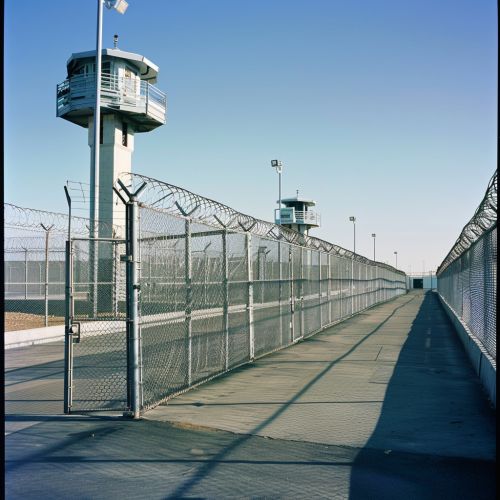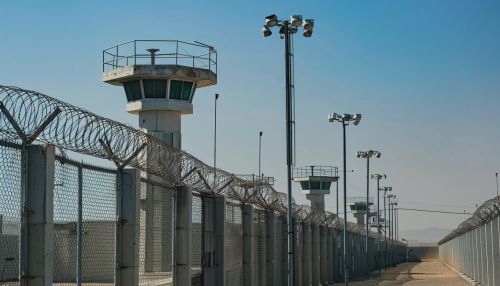Correctional Facility
Introduction
A correctional facility, also known as a prison, jail, or detention center, is an institution designed to house individuals who have been convicted of crimes or are awaiting trial. These facilities serve multiple purposes, including the punishment, deterrence, rehabilitation, and incapacitation of offenders. Correctional facilities vary widely in terms of their security levels, inmate populations, and the types of programs and services they offer.
Types of Correctional Facilities
Prisons
Prisons are long-term facilities typically used to house individuals convicted of serious crimes. They are usually operated by state or federal governments and are classified into different security levels, including minimum, medium, and maximum security.
- Minimum Security Prisons: These facilities often resemble dormitories and have fewer security measures. They are designed for non-violent offenders and those nearing the end of their sentences.
- Medium Security Prisons: These facilities have more security features, such as perimeter fencing and surveillance, and house inmates with a range of offense types.
- Maximum Security Prisons: These are high-security facilities designed to house the most dangerous offenders. They have extensive security measures, including high walls, armed guards, and strict inmate protocols.
Jails
Jails are short-term facilities typically operated by local governments. They house individuals awaiting trial, sentencing, or serving short sentences, usually less than a year.
Juvenile Detention Centers
These facilities are designed specifically for individuals under the age of 18 who have been accused or convicted of crimes. They focus more on rehabilitation and education than adult correctional facilities.
Specialized Facilities
Some correctional facilities cater to specific populations, such as mental health units, drug rehabilitation centers, and military prisons.
Security Measures
Correctional facilities employ a variety of security measures to maintain order and prevent escapes. These measures vary depending on the security level of the facility.
- Perimeter Security: This includes high walls, razor wire, and electronic surveillance systems.
- Internal Security: This involves controlled access points, metal detectors, and regular inmate counts.
- Technological Measures: Facilities use advanced technologies such as biometric scanners, CCTV, and electronic monitoring systems to enhance security.


Inmate Classification
Inmates are classified based on various factors, including the severity of their crimes, behavior, and risk of escape. This classification helps in determining the appropriate security level and housing assignment.
- Risk Assessment: Evaluates the potential threat an inmate poses to others and the likelihood of escape.
- Behavioral Assessment: Considers the inmate's conduct within the facility, including participation in programs and compliance with rules.
- Medical and Psychological Evaluation: Assesses the inmate's physical and mental health needs.
Rehabilitation Programs
Rehabilitation is a key component of the correctional system, aimed at reducing recidivism and helping inmates reintegrate into society. Programs vary widely but generally include:
- Educational Programs: Offering basic literacy, GED preparation, and vocational training.
- Substance Abuse Programs: Providing treatment and counseling for drug and alcohol addiction.
- Mental Health Services: Offering therapy and support for inmates with mental health issues.
- Work Programs: Allowing inmates to work within the facility or in community service roles to gain job skills.
Legal and Ethical Considerations
Correctional facilities operate under strict legal and ethical guidelines to ensure the humane treatment of inmates. These guidelines are influenced by national and international laws, including:
- Human Rights Laws: Ensuring that inmates' basic rights are protected, including access to healthcare, legal representation, and humane living conditions.
- Prison Litigation Reform Act (PLRA): A U.S. federal law that aims to reduce frivolous lawsuits by inmates but also ensures that legitimate grievances are addressed.
- International Standards: Guidelines such as the United Nations Standard Minimum Rules for the Treatment of Prisoners (the Nelson Mandela Rules) set global standards for the treatment of inmates.
Challenges and Controversies
The correctional system faces numerous challenges and controversies, including:
- Overcrowding: Many facilities operate above capacity, leading to poor living conditions and increased tension among inmates.
- Recidivism: High rates of reoffending indicate that many correctional systems struggle to rehabilitate inmates effectively.
- Privatization: The use of private companies to operate prisons has sparked debate over cost-effectiveness and ethical concerns.
- Use of Solitary Confinement: Prolonged isolation can have severe psychological effects, raising ethical and human rights issues.
